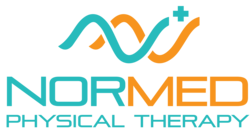Table of Contents
Scoliosis is a complex condition that affects the curvature of the spine, and it often comes with misconceptions and myths. As a Schroth physiotherapist, I’m here to shed light on some of these common misconceptions surrounding scoliosis. Let’s separate fact from fiction and empower you with accurate information about this condition.
Myth 1: Scoliosis is always caused by poor posture.
Fact:
While poor posture can contribute to the progression of scoliosis, it is not the sole cause.
Scoliosis can result from a combination of factors, including genetic predisposition, neuromuscular conditions, or even unknown causes (Idiopathic Scoliosis). It’s important to remember that scoliosis is a complex condition with multifactorial origins.
Myth 2: Scoliosis can be cured with exercise alone.
Fact:
Exercise and physiotherapy can play a crucial role in managing scoliosis, but it is unlikely to cure the condition entirely. The goal of exercise is to improve posture, strengthen muscles, enhance mobility, and manage associated pain. While these interventions can promote better spinal alignment and functional abilities, they do not eliminate scoliosis itself.
Myth 3: Bracing is ineffective and uncomfortable.
Fact:
Bracing is a widely accepted and effective treatment approach for managing scoliosis, especially in adolescent patients with moderate to severe curves. Customized braces help to stabilize the spine, prevent progression, and promote better alignment. Modern bracing techniques have improved over time, ensuring both effectiveness and comfort. I highly advise talk to your Schroth Therapist regarding the brace selection.
Myth 4: Scoliosis will inevitably worsen over time.
Fact:
The progression of scoliosis varies among individuals. While some cases may progress, especially during periods of growth, others may remain stable. Regular monitoring by a healthcare professional, such as a Schroth physiotherapist or orthopedic specialist, can help track any changes and determine appropriate management strategies.
Myth 5: Scoliosis only affects teenagers.
Fact:
While scoliosis is commonly diagnosed during adolescence, it can occur at any age. Adult-onset scoliosis, known as degenerative scoliosis, can develop later in life due to wear and tear on the spine. Scoliosis can also be present from birth or result from neuromuscular conditions or trauma.
Myth 6: Surgery is the only option for severe scoliosis.
Fact:
Surgery is considered in severe cases of scoliosis where the curvature progresses significantly and causes severe symptoms or impaired organ function. However, surgery is not the only option, and some individuals with scoliosis can manage their condition successfully through non-surgical approaches, including physiotherapy using Schroth Method, bracing, and pain management strategies.
Myth 7: Scoliosis restricts physical activity.
Fact:
While certain precautions and modifications may be necessary, scoliosis does not necessarily restrict physical activity. In fact, regular exercise and staying active are essential for managing scoliosis. Engaging in low-impact activities, such as swimming, walking, or specific exercises prescribed by your physiotherapist, can promote muscle strength, flexibility, and overall well-being.
Conclusion:
Don’t let myths cloud your understanding of scoliosis!
By separating fact from fiction, you can make informed decisions about your health. Remember, scoliosis is a unique condition that requires individualized care and management strategies. Consulting with a qualified healthcare professional, such as a physiotherapist or orthopedic specialist, will provide you with the accurate information and guidance you need to effectively manage scoliosis.
Let’s debunk the myths, embrace the facts, and support one another on our scoliosis journeys!
Disclaimer: This blog post is for informational purposes only and should not replace professional medical advice. If you have specific concerns or questions about scoliosis or your health, consult with a qualified physiotherapist or healthcare provider.

